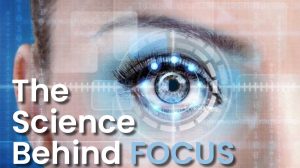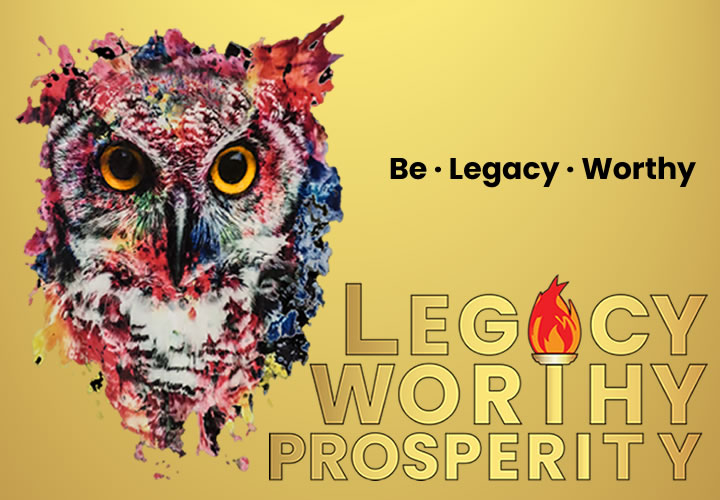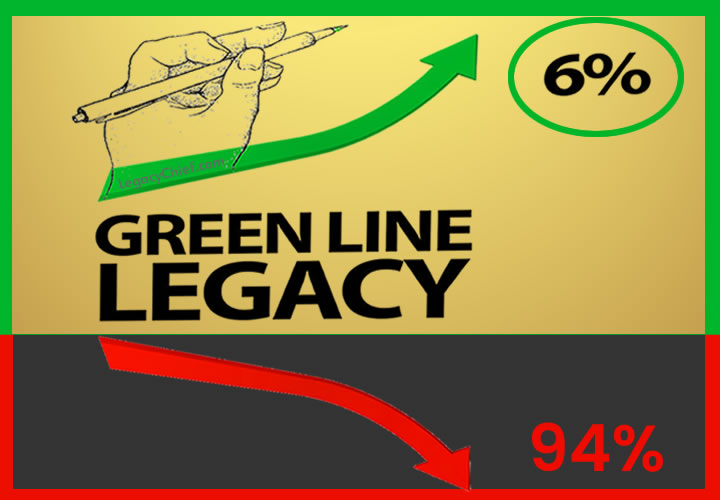The Science Behind Focus

Did you know that the behavioral triggers to focus on one task at a time have been forged deep within the human psyche over millions of years of human evolution?

Our human development occurred in tribal societies where survival was dependent on those around you, humans are hardwired to respond to behavioral triggers in ways that are almost impossible to resist.
We can focus and add happiness to our joy regardless of what happens by concentrating on some basic points.
Phrases like: Live in the present. Take things one day at a time. The current buzz word for this is “being mindful,” others call it “focusing.” “Wherever you are, be there.” Take care of things today and do what you can do to make things as positive as possible for tomorrow.
These triggers work by stimulating the release of chemical compounds in the brain.
Behavioral Triggers at Work
There are 5 behavioral triggers to achieve a flow state:
- Pre-commitment
- Implementation intentions
- Social pressure
- Accountability
- Specificity in task definition
-
Precommitment
Definition: Precommitment is making a commitment to a task or goal in advance of the time when the steps toward that commitment will have to be carried out.
Example: Signing up for a gym class the day before.
Benefits: Committing to a goal in advance makes you more ambitious because of an effect known as discounting. Discounting is perceiving the costs and benefits of events in the future as relatively less significant than those of events in the present.
In addition, precommitment also improves outcomes on that goal, potentially due to the additional time allowed to prepare for and accommodate that goal. (1,2,3)
-
Implementation intentions
Definition: Implementation intentions are specific and tangible plans for how you will execute a given objective. You know what to do and how you will do it.
Example: Avoiding drinking at a party by ordering a soda right when you arrive.
Benefits: Implementation intentions increase efficacy in completing a task or goal. (4,5)
Don’t just look at things or just hear things. See them and listen to them. See nature. See the world. See the people closest to you and others with whom you come in contact. Taste the food you eat and enjoy whatever you drink, whether it be water or anything else. This is an add-on to mindfulness or focus. It’s the very essence of “Wherever you are, be there.” Take nothing nor anyone for granted.
-
Social pressure
Definition: Social pressure is the application of heightened demands on oneself when in the presence of others, in theory so as to fulfill certain implicit and explicit expectations and achieve social acceptance.
Note: This is also related to mirror neurons, which cause us to unconsciously mirror the feelings of those around us, in theory in order to make others comfortable and be more likable ourselves, as well as basic competition, the deliberate or reflexive drive to perform better when around others, in theory to signal higher status and garner better mates.
Example: Student test performance improves in settings where others are present, as long as the content is familiar.
Benefits: Social pressure and competition improves performance on most tasks. Research shows that the mere presence of another person improves human performance by 16 to 32 percent. (6)
-
Accountability
Definition: Accountability reflects the potential for consequences when failing to comply with a given agreement. In a broad sense it is being held responsible to address the impact of one’s actions. It is not punitive or judgmental—it is simply creating a cause and effect relationship between an action and its consequences.
Example: The flight attendant closes the gate 15 minutes prior to departure, and won’t negotiate or bend for late passengers.
Benefits: Accountability shows performance improvements of 230 to 310 percent in public goods experiments. (7)
-
Specificity in task definition
Definition: Specificity in task definition refers to the granularity and concreteness of the task definition. The actions involved in well-specified tasks are described and can therefore be quickly visualized and then carried out.
Example: “Call Randy at 9am to wish him happy birthday (555-501-5555)” versus “Call Randy”
Benefits: Across numerous goal- and intention-setting studies, 90 percent show a significant, positive impact on productivity when setting specific and challenging goals. (8,9)
Be creative. Creativity is doing a common thing uncommonly well. It is looking at old things with a fresh pair of eyes. It is taking a process, a method, a way of thinking, an approach, a group of people, a problem or anything else and giving it a different twist. Don’t get hung up on, “We’ve always done it this way.” Try something else.
Hacking Your Brain Chemistry
A significant portion of human behavior is controlled by just four brain chemicals: dopamine, oxytocin, serotonin and endorphins.
By stimulating the release of these chemicals, intense focus induces productivity with less conscious exertion.
Dopamine
Dopamine is like a surge of gratification that comes from accomplishing a goal, big or small. Dopamine is what you feel when you pull in the driveway after a long trip, when you cross the finish line of a race, and when you hit “Publish” on a blog post.
High dopamine levels lead to enthusiasm and perseverance; low levels to procrastination and self-doubt.
Harness dopamine by breaking the process of productivity into small steps, each of which stimulates a dopamine release: scheduling a time with a mate to focus, getting matched with a partner, and finishing a single session each stimulate a dopamine release. #commitment
Furthermore, by forcing you to break your tasks into pieces, and requiring you to list each task you work on, applying focus helps you generate your own dopamine hits in steady intervals.
Serotonin
Serotonin is the chemical that makes you feel special or important, when you receive a compliment, or a pat on the back. Serotonin is one of the reasons that developing positive self-talk improves your resilience! It’s also why we develop affiliations with groups of people that make us feel like we’re part of something bigger than ourselves.
Stimulation of serotonin by helping you notice and celebrate your accomplishments more easily and more often. Every time you focus in a session, you have a chance to be acknowledged, by yourself and your partner(s), for a job well done.
By fostering a human connection with your partner and within the a community, you build a serotonin trigger that gets pressed with every single session.
Oxytocin
Oxytocin creates intimacy and trust and helps us build more meaningful relationships. When it’s absent, our minds wander and we find ourselves on Facebook, or sending text messages, just to feel a connection. When it’s present, we feel safe and connected.
The ability to foster meaningful connections because it is so much more human than other online experiences. While you might find yourself on Facebook seeking human connection, you will rarely find it, which is why social media usage is linked to negative feelings.
Creating a real connection with another person, your partner starts with a greeting to one another at the start of each session, and to check in at the end. As a result, working in silence, side by side with your partner is a deeper connection than most people feel throughout their work day.
Endorphins
Endorphins alleviate pain, stress, anxiety and depression. Historically, endorphins could help a hunter push himself past the point of exhaustion. Today, you might find yourself getting an endorphin boost when a colleague makes a joke, and suddenly a dire situation doesn’t feel so bad.
Stimulating endorphin release provides excuses for frequent, non-serious human interaction throughout your workday. Every time you talk with a mate, you’re forced to step out of whatever pain you’re feeling and connect with that person. Even the act of talking about your work can help you feel more light-hearted about it!
What about adrenaline?
Also known as epinephrine, adrenaline helps you survive dangerous situations by stimulating blood flow and pupil dilation, commonly known as the “fight or flight” response. It’s that rush you feel when you go to cross the street and see a car coming at the last second.
People who procrastinate rely heavily on adrenaline to be productive. When you wait until a deadline is impending and the risk of failure looms large, your body generates an adrenaline boost that allows you to power through the work.
Research by Teresa Amabile at Harvard shows that people in this adrenaline-induced state are not as productive as they think they are. Amabile showed when people are intensely busy they feel good but overestimate the quality of their work, and rarely have creative breakthroughs. The best way to get important work done is with low to medium pressure, and accountability from just one or two people. (10)
In this way, you eliminate and add a balm for procrastinators: Scheduling sessions prevents you from waiting until the last minute and relying on adrenaline, which produces sub-optimal work quality. Instead, it fosters the low-grade pressure and accountability that is ideal for producing the best work possible — and it does so without the stress.
The Flow Experience
A core component of good work flow is experiencing what psychologists refer to as a “flow state”—long stretches of intense focus.
It has been suggested by several notable authors and scholars including Cal Newport and Mihály Csikszentmihályi that the flow state is one of unparalleled productivity, due to our ability to generate creative, original and substantive work.
Researchers Jeanne Nakamura and Csíkszentmihályi identify the following six factors as encompassing an experience of flow (11):
- Intense and focused concentration on the present moment
- Merging of action and awareness
- A loss of reflective self-consciousness
- A sense of personal control or agency over the situation or activity
- A distortion of temporal experience, one’s subjective experience of time is altered
- Experience of the activity as intrinsically rewarding, also referred to as autotelic experience
The Benefits of Flow
While flow is an intrinsically positive experience, according to Csikszentmihályi, flow is known to improve performance and “produce intense feelings of enjoyment”
Initial research suggests that the flow experience also creates other benefits, including happiness, the frequency of positive moods, and personal development.
It has also been linked to to persistence and achievement, reducing anxiety and raising self-esteem.
Take advantage of your skills, intelligence, and experience. You can ask questions and find answers to things no one else can. In the history of the world, there has been only one you. There will never be anyone else exactly like you. Develop what you have, so the world can experience what you can do, the way you can do it.
Focusmate Focusmate app uses behavioral triggers to our advantage. [Recommended]
https://www.focusmate.com/science
FOCUS: Be YOU through it all. Don’t become who you are not. Cry. Scream if you have to. Reach out to others and talk about things happening in your life. But keep on being who you are. Keep on being the person you were before bad things happened. Decide to grow stronger spiritually, mentally, and emotionally. Bring peace. Embrace the future to gives you strength to face your challenges.
Precommitment and Focusmate: Focusmate allows you to plan the times that you’ll work in advance. Without Focusmate, you might have a longstanding and generic commitment to work on weekdays roughly during working hours. However, a Focusmate session is a specific and concrete commitment to another person – when you book a Monday 9am session you’re essentially saying, “I commit to work with my partner on Monday at 9am for 50 minutes”.
Implementation intentions and Focusmate: In a sense, Focusmate is the implementation intention. When asked how you intend to complete a blog post, you might reasonably respond, “I’ve scheduled two Focusmate sessions on Tuesday for it.”
Focusmate has several implementation intentions embedded right into the experience, including: (a) having an appointment blocked out on your calendar, (b) having a partner expecting you at that time, (c) specifying your intended task, to your partner, when you begin your Focusmate session.
As a result, the act of scheduling a Focusmate session directly and indirectly engenders the benefits of implementation intentions.
Social pressure and Focusmate: Focusmate integrates several layers of social pressure. The basic layer is the presence of your partner on a Focusmate session.
Next is the specific intention you shared with your partner, which then becomes an expectation for you to fulfill.
Finally is the substantial desire to be perceived and rated as a desirable partner, and to build a positive reputation in the Focusmate community, which drives behaviors such as timeliness and discipline during sessions.
Accountability and Focusmate: If you are 2+ minutes late to a session, you may be matched with a new partner (we provide your initial partner with the opportunity to re-match). If you are 5+ minutes late, your Timeliness score, which only you can see, will reflect that.
Specificity and Focusmate: When beginning each Focusmate session, users specify their first task, and then write them down in detail in the chat interface. Users follow the same protocol for each subsequent task. Designating a distinctive “step” in the Focusmate process helps users dedicate the time and mental resources necessary to actually do this specifying, and improves follow through as a result.
Brain Biochemicals: By helping stimulate the four chemicals, dopamine, oxytocin, serotonin and endorphins, Focusmate makes the experience of being productive more enjoyable, sustainable, and habitual.
Suggested Reading and Videos
- Flow: The Psychology of Optimal Experience by Mihály Csikszentmihályi. See it on Amazon.
- Flow, the secret to happiness, by by Mihály Csikszentmihályi. Watch the talk.
- Deep Work: Rules for Focused Success in a Distracted World by Cal Newport. See it on Amazon.
- The Akrasia Effect by James Clear. Read article.
- Originals by Adam Grant. See it on Amazon.
Sources and Further Reading
- Kurth-Nelson, Zeb; Redish, A. David (2012), “Don’t Let Me Do That! – Models of Precommitment”. Front Neurosci. 2012; 6: 138. Published online 2012 Oct 8. (link)
- Branch, Robert M.; Hao, Qiang; Jensen, Lucas (August 2016), “The Effect of Precommitment on Student Achievement Within a Technology-Rich Project-Based Learning Environment”. TechTrends (2016) 60:442–448. (link)
- Ariely, Dan; Wertenbroch, Klaus (May, 2002), “Procrastination, Deadlines, and Performance: Self-Control by Precommitment”. Psychological Science. (link)
- Milkman, Katherine L. ; Beshears, John; Choi, James J.; Laibson, David; Madrian, Brigitte C. (2011), “Using implementation intentions prompts to enhance influenza vaccination rates”. Proceedings of the National Academy of Sciences: Vol. 108 No. 26.
- Milkman, Katherine L.; Rogers, Todd (2015), “Making the Best Laid Plans Better: How Plan-Making Prompts Increase Follow-Through”. Behavioral Science and Policy. (link)
- Falk, Armin; Ichino, Andrea (January 2006), “Clean Evidence on Peer Effects”. Journal of Labor Economics, Vol. 24, No. 1 , pp. 39-57. (link)
- Fehr, Ernst; Gächter, Simon (Sep., 2000), “Cooperation and Punishment in Public Goods Experiments”. The American Economic Review, Vol. 90, No. 4 , pp. 980-994. (link)
- Locke, Edwin A.; Shaw, Karyll N.; Saari, Lise M.; Latham, Gary P., “Goal setting and task performance: 1969–1980.” Psychological Bulletin, Vol 90(1), Jul 1981, 125-152. (link)
- Umstot, Denis D.; Bell, Cecil H.; Mitchell, Terence R., “Effects of job enrichment and task goals on satisfaction and productivity: Implications for job design.” Journal of Applied Psychology, Vol 61(4), Aug 1976, 379-394.
- Kenny, Brian. “Does Time Pressure Help or Hinder Creativity at Work?”. Cold Call Podcast, Harvard Business Review, Working Knowledge, December 7, 2017. (link)
- Nakamura, J.; Csikszentmihályi, M. (20 December 2001). “Flow Theory and Research”. In C. R. Snyder Erik Wright, and Shane J. Lopez. Handbook of Positive Psychology. Oxford University Press. pp. 195–206. ISBN 978-0-19-803094-2.
- Csikszentmihályi, M. (1988), “The flow experience and its significance for human psychology”, in Csikszentmihályi, M., Optimal experience: psychological studies of flow in consciousness, Cambridge, UK: Cambridge University Press, pp. 15–35.
- Csikszentmihályi, M. (1997). Finding flow. The psychology of engagement with everyday life. New York: Basic Books.
- Nakamura, J., & Csikszentmihályi, M. (2014). The concept of flow. “Handbook of positive psychology,” 89-105. New York, NY: Oxford University Press.



